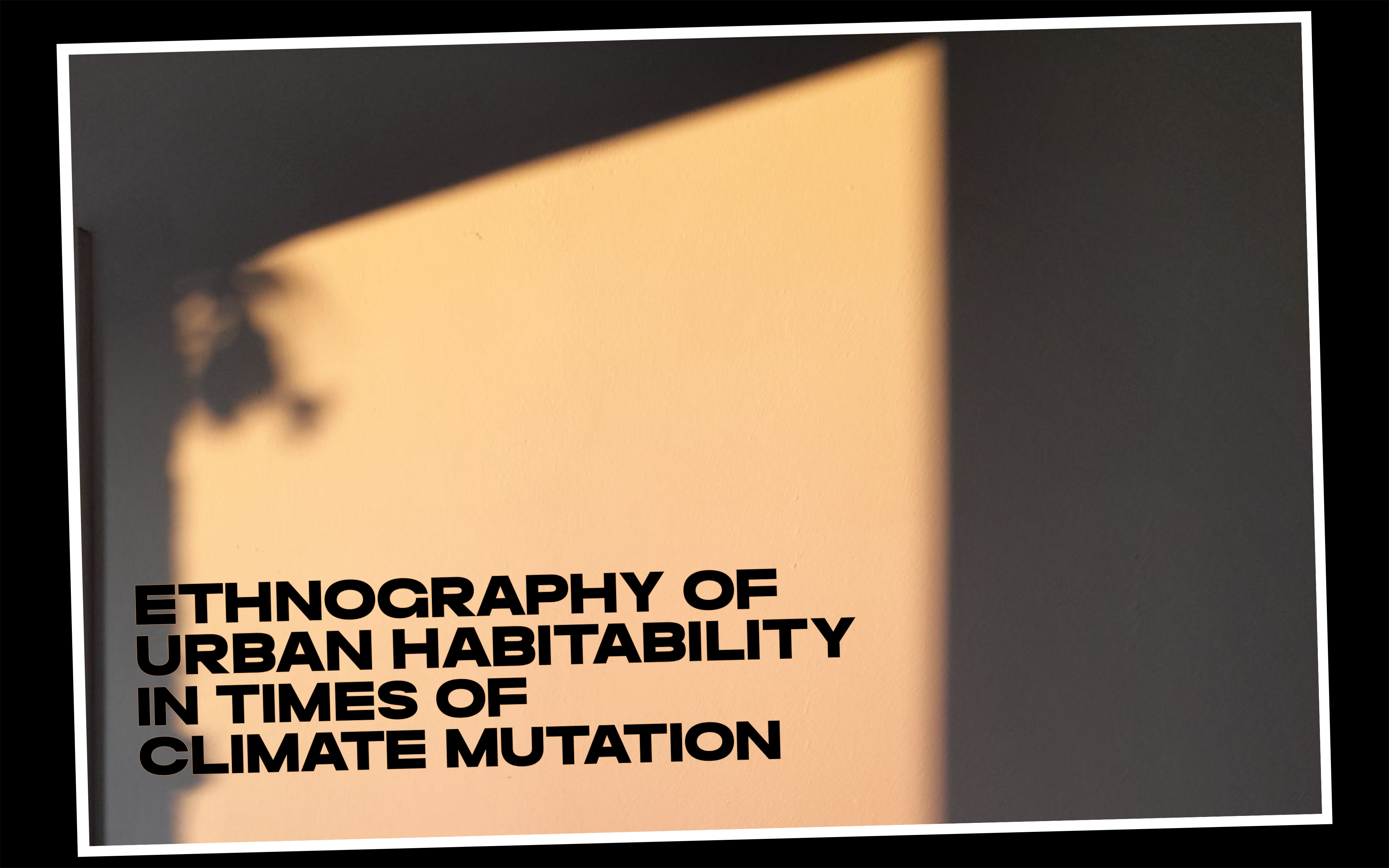▒▒▒▒▒▒▒▒▒▒▒▒▒▒▒▒▒▒▒▒▒▒▒▒▒▒▒▒▒▒▒▒▒▒▒▒▒▒▒▒▒▒▒▒▒ This issue was prepared by Tomás Criado and curated by Zofia Buni and Paloma Yáñez Serrano. Design and edition: Santiago Orrego. ▒▒▒▒▒▒▒▒▒▒▒▒▒▒▒▒▒▒▒▒▒▒▒
Cite this article: Criado, T. and Orrego, S. 2024. “The city of shades.” Tarde 6 (Jul – Aug). DOI: 10.17605/OSF.IO/JU6VM
Our climate cultures are in crisis. Heat is no longer a distant or abstract event, something that happens to us. It is among us. And in its most extreme versions, it appears more like a chronic illness with profound, unequal, and devastating effects [1].
In a peculiar way, for a country like Spain, where I live, accustomed to sun and heat as a recurring seasonal issue, this places us before a crisis for which we can feel over-prepared. But summer after summer, heat wave after heat wave, inherited habits and practices do not quite work. It is no longer enough to walk under cover, wear sunscreen, drink a lot, dress lightly, lower the blinds, and wait for the worst to happen because the worst is yet to come on those torrid, tropical, and infernal nights, as meteorologists call them.
Modern infrastructures and construction methods, which made us feel at the avant-garde, appear today hopelessly problematic. We need a radical change. Different international and intergovernmental organizations have long warned that the response to climate change must start from cities [2]: increasingly populated settlements and complex-to-change infrastructures from which we need to rethink the habitability of the planet.


The ongoing climatic mutation places us before the challenge of reconfiguring urban ideas of care, protection, or shelter, inventing more plural ways of living, and protecting those who could be more exposed or suffer more from its devastating effects [3]. In that sense, we live in a time of urgency and frantic searches for solutions. However, and this is my proposal, in addition to infrastructural or “nature-based” solutions, we have an important task before us: this requires, above all, redescribing what the urban might be.
In situations of great uncertainty, where how to respond is sometimes difficult to imagine, we may need to train themselves to pay attention to the seemingly irrelevant but crucial, such as urban shades and shadows: unimportant entities that articulate urban life and our daily relationships with the sun and heat.
Without a doubt, there is nothing more conventional than shades. As terrestrial beings we all have one. But thinking about urban shades can be something much deeper than it seems, since it forces us to pay attention differently to our everyday environments. Indeed, what is shade if not a changing relationship we enter with the Sun as it passes through our habitats throughout the day?

With Copernicus and Galileo, modernity put the Sun at the center. One of the many effects of this heliocentric turn and its profound cosmological effects is that we tend to attribute to the star that presides over our firmament a beneficent role, the ability to give life and irradiate us with its strength, but this regularly positive appreciation needs a counterpoint: What to do when it harms us or puts us at risk, such as in the conditions of extreme atmospheric heat or in the solar exposure that leads to melanoma? [4]
The modern philosophical tradition, but also our forms of artistic expression and folklore –– with innumerable children’s songs praising the Sun –– have difficulties treating without prejudice everything that remains outside of these irradiations: a solarized caricature treated as the archaic, the conservative, the dangerous, the murky hours of the night. However, and this is the hypothesis that I would like to share here, what if we have never been solar? What if, to breathe and think again, sheltered from wild solar power, we need to move the Sun away from the center?
This does not necessarily mean to stop considering the relevance of the Sun, nor resurrecting the Platonic distrust that condemns us to see nothing more than the shadows projected on the walls of a cave. The type of ‘sheltered thinking’ that we could begin to practice has, rather, shades at its center: What if shades were not the possibility of thinking negatively, taking things for what they are not, but a way of thinking protected from the Sun and its scorching heat and irradiation? In fact, as baroque painting amply showed, shadows are central to our perception, allowing figure/ground distinctions, but they are also key to our understanding of the world and our survival [5].

Taken thusly, our terrestrial life could be re-read as a long interspecific story of how the living have learned to protect ourselves from solar irradiation. That is one of the most interesting arguments in the work of paleontologist and geologist Anthony J. Martin, Evolution Underground, which traces the evolutionary importance of burrows and underground architectures for the survival on the face of the earth of many animals since time immemorial, including human beings [6].
But, going further, the atmosphere itself, an initial bacterial achievement, with its complex circulation of air, or later in the history of the Earth, the seas and river banks, the iridescent tapestry of clouds and forests are nothing but aspects of a patchy system, with singular expressions, of ways to capture, regulate, dissipate or block the Sun’s rays. In this renewed centrality of shades, we cannot forget plants and their important role in making our planet habitable.

Philosopher Emanuele Coccia expressed this very poetically in a recent conference titled “The Garden of the World.” One of his main arguments is that what we call Earth today cannot be understood but as a technical achievement of life, more precisely the work of plants, crucial to producing the atmosphere and orography, as well as the oxygen thanks to which other beings live:
“The Earth has the status of an artifact… a cultural production of all living beings that inhabit it and not only the transcendental precondition for the possibility of life. Gaia is Flora’s daughter. The Sun is Flora’s cosmic doll” (my translation) [7].
And what would have happened to the terraforming of our planet were it not for plants and, more particularly, trees: with their ability to transform soil and air, producing habitats or microclimates so that many animals could begin to crawl beyond the seas sheltered from the Sun [8]
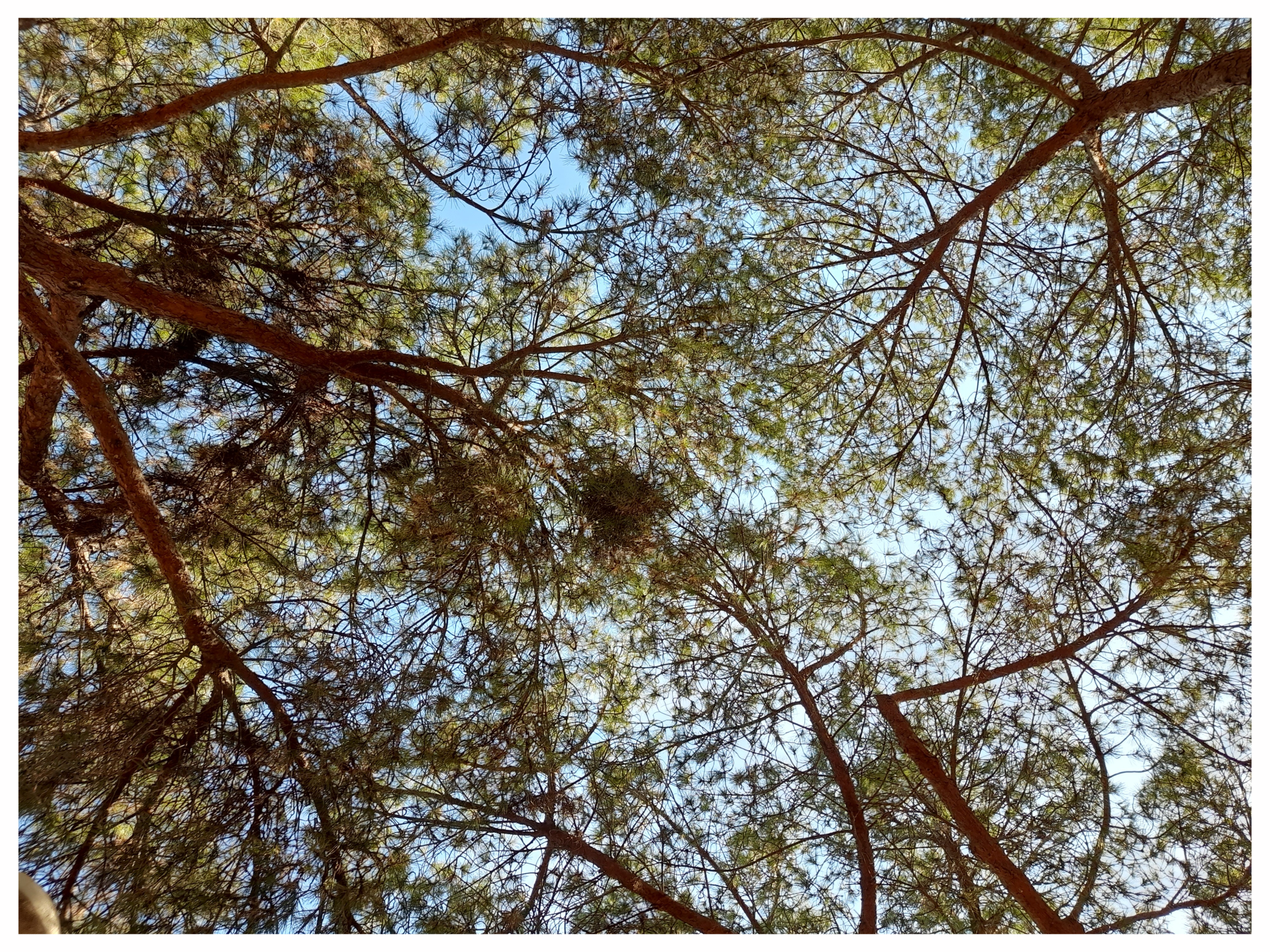
In fact, many of our primary experiences of shade and protection from the Sun actually have to do with the delicate interweaving of tree foliage and the strange collage of plant cover. Thinking with trees allows us to venture another hypothesis about the habitability of our planet: What if shades have been more important than what we have told ourselves until now? What’s more, despite the fact that they are usually considered a secondary product of the Sun, its negative version, what if shades were the very condition of habitability on Earth and, therefore, in urban habitats troubled by climatic mutation?
The interesting thing is that even if shades are an old acquaintance, growing environmental concerns have caused administrations and professionals of all kinds to begin to recover this daily environmental relationship, long forgotten by modern forms of urbanization. For this reason, it has gained great importance in different technical solutions to face the extreme heat of the present: municipal shading plans, bioclimatic itineraries, or shade infrastructures [9]. This requires revitalizing ancient knowledges and techniques, as well as speculating and creating new solutions to mitigate and adapt to increasing heat.
Stating that we have never been solar, paying attention to shades also means restoring the violence exercised against many ancestral traditions by the moderns, with their hygienist obsession with clean air and wide, controlled streets intended primarily for traffic. This heliocentric or solar urbanism was the way in which Reason re-incarnated as a city project. In the aftermath of this, centering shades is also a way to restore their relevance for urban habitability, which allows us to admire the wrongly called ‘vernacular’ architecture with different eyes, seeking inspiration! Also, as Paloma Yáñez Serrano suggested in a conversation, it might lead us to understand trees and plan shades not just as ‘infrastructure’ but something part of a complex sentient ecology we should allow to thrive, something urban ecology and forestry schools are far from doing!

However, to say that we have never been solar is not to throw modernist architecture overboard but rather to notice modernist urban formations for which shade has also been relevant. That is, it is about re-reading architecture and urbanism not from the blinding light of the Enlightenment but from the murky atmospheres of shades and shadows, as architect Stephen Kite proposes in his book Shadow-makers, a cultural history of shadows as a ‘shaping factor in architecture’, both in its traditional and modern forms [10].
Although much of Kite’s book is devoted to the importance of shadow in defining the cavities of buildings and interior spaces, there is a wonderful chapter on the Mediterranean and Middle Eastern Islamic city because what is the medina –– an architectural conglomerate formed by deep canyon adobe buildings, together with canopies and the use of damp fabrics –– but a great ode to shade as a principle of urban habitability?[11].

But there are also interesting examples of urban treatments of shades and shadow in different modernist traditions that have developed in hot and arid climates. This is extensively covered in a recent exhibition on tropical modernism in Africa and India curated by Christopher Turner at the Victoria and Albert Museum in London [12].
In Barcelona, where I reside, there is also a history to be reconstructed of modernist shade architectures, of which the two umbracles (shadow buildings) of the modernist Ciutadella and Montjuic parks stand out: Siamese structures, but that operate on the inverse principle of the greenhouse, even if conceived as part of the same colonial impulse. This is far from being a local story: a similar twin architecture can be found in Lisbon’s signature Estufa Quente and Estufa Fria. Indeed, umbracles or estufas frias and greenhouses can be read as key to what architectural historian Lydia Kallipoliti calls the grammars of ‘colonial acclimatization,’ which allowed the fragile transportation, and the massive relocation of plants, animals and people from different regions of the world, for the purposes of trade and exhibition, sometimes also starting out a new troubled life in the metropolis [13].
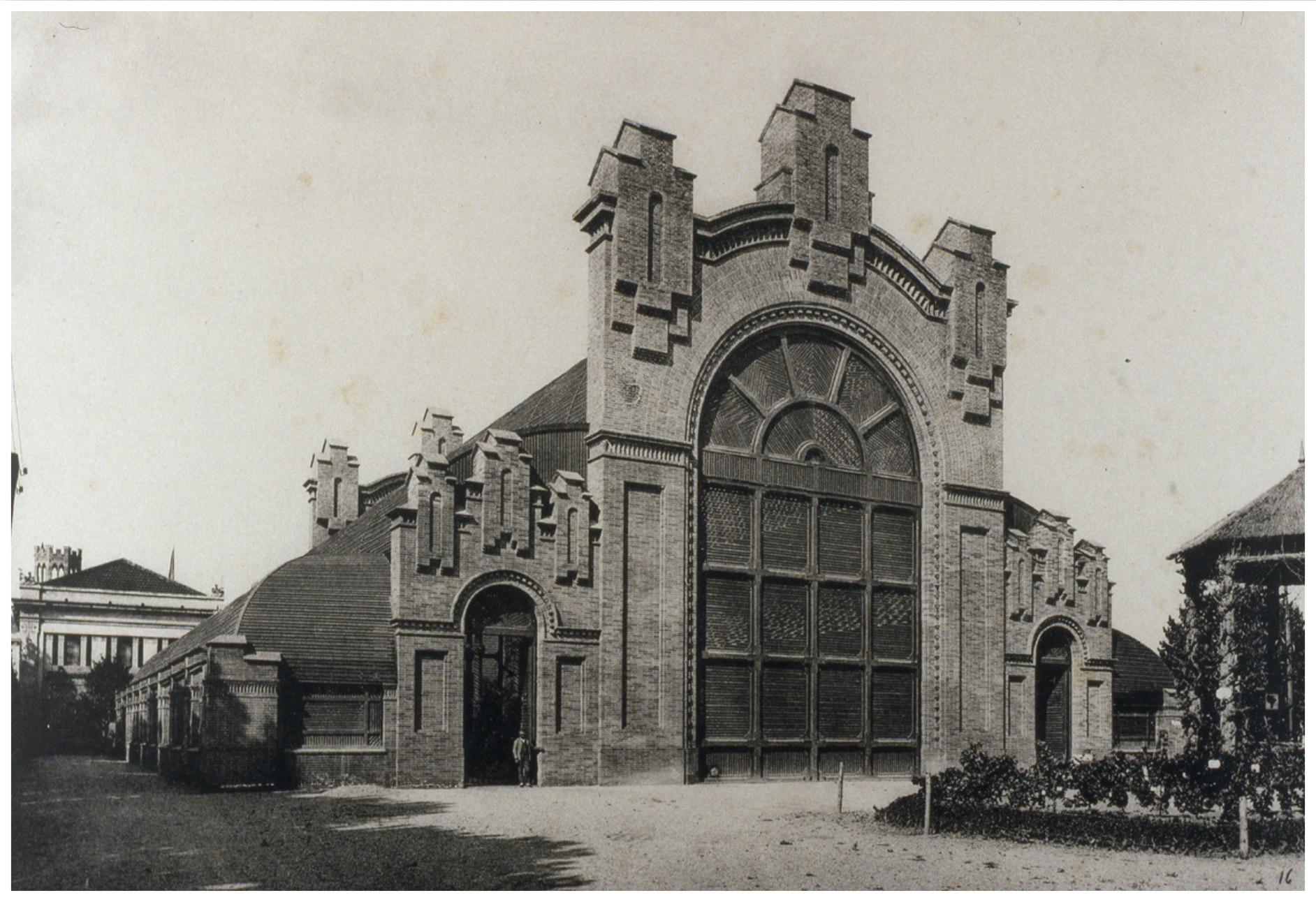

And yet, the great ‘achievements’ of the past, no matter how problematic or interesting, cannot be ‘the’ solution. We have entered an experimental moment, one of great stupor. Our cities have become what the French philosopher and anthropologist Bruno Latour calls “critical zones”: complex unknown territories where living beings are literally risking their lives, but also where they rush the most to continue making liveable worlds in their irreducible plurality [14]. The challenge we face in what Latour calls the “new climatic regime” in these critical urban zones is, therefore, to engender plural forms of habitability in a frankly complex and problematic moment without guarantees [15].
To tentatively respond to this major challenge, I believe we need to experiment with forms of urban transformation. This may sound paradoxical, I know because we are at a moment where we feel like we have to run to do something to fix the problem right away. But we must be careful not to turn this rush into a technocratic project governed by experts or elites who impose on us how to live, as in the colonial period. No doubt, terrible things are underway, but there is a great danger of confusing the diagnosis with the solution, especially when we do not know how we could live and with whom.
Precisely in this moment of pressing urgency, we need more than ever an experimental culture to rethink the city. With this precaution concerning technical solutions, I do not mean that countless infrastructural arrangements –– such as porous and reflective pavements or shaded spaces to protect us from the Sun and the heat island effect ––are not important. We also need to learn to leave space for plants to develop or allow animals to thrive in cities on an equal footing. This is all key, but we need to go further.

At a time like this, we also need to address the social and material life of atmospheric and climatic phenomena, such as shades, whether already existing or designed. In a heated present, where the ability to shelter ourselves from the scorching Sun is a poorly distributed good, revitalizing their knowledge and generative practices may be crucial to relearning to live as earthly beings.
To do this, perhaps we need a ‘Department of Umbrology’ in each of our territories. This notion was developed by writer Tim Horvath in his short story The discipline of shadows, where he explores the complex relationships in a comically absurd university department devoted to the study of the life of shadows, where physicists, shadow theater dramaturgs and Platonic philosophers coexist without understanding each other, generating funny situations in their mutual incomprehension [16].
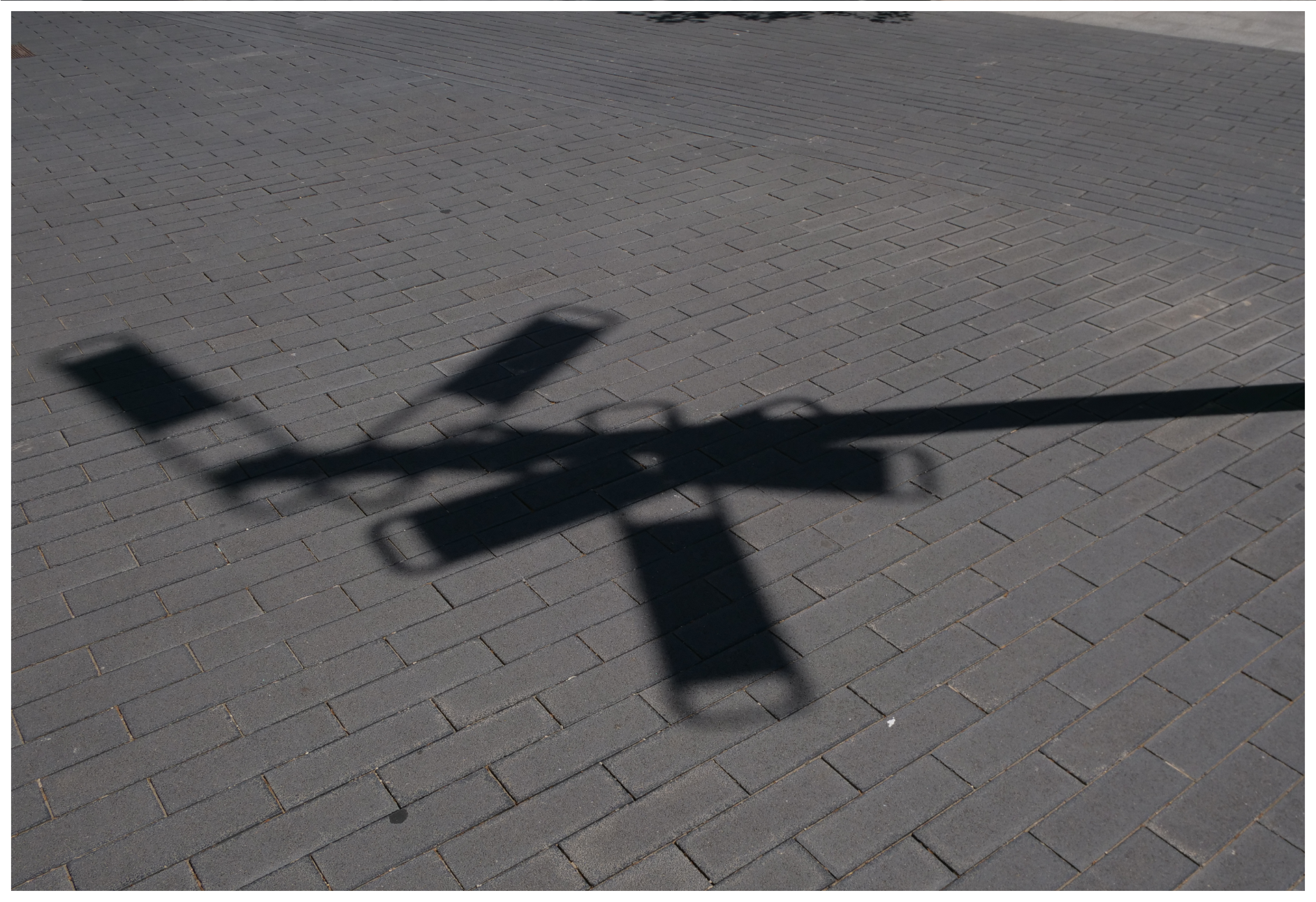
However, in an absurdly tragic moment like the one we find ourselves in, we might need to explore how to make the type of space inspired by that story exist, but not as a university department. Rather, taking inspiration from the description and intervention work of artivist collectives such as the Los Angeles Urban Rangers [17] or the dramaturgical speculative experiments of the Crisis Cabinet of Political Fictions [18], what if we imagined it as a workspace devoted to the study of and intervention in the urban life of the shades: hence developing umbrology as a practice addressing both physical and material aspects as well as social and cultural relationships.
To make it exist, we would need to train ourselves to appreciate the intricacies of this environmental relationship: devoting ourselves to the study of the complex relationships between the Sun and buildings, the street or trees, as well as the role that different types of shadows can have for different people or groups and their ways of surviving the scorching heat. I would like to appeal to the relevance of ethnography for this task because of how it foregrounds an investigation of the embodied and situated study of practices, the senses, and ways of life. Ethnography would also allow a different approach to inquiry, enabling an understanding of environmental phenomena beyond two well-trod paths in which we render shades readable and discussable: [19]
- On the one hand, climatological and meteorological practices that foreground their temperature and other atmospheric variables (such as humidity), leaving in the shadows their lived or cultural dimensions, the forms of life from which they arise and those that make them emerge, enabling or disabling different urban climates;
- On the other hand, the practices of spatial legibility, from a bird’s eye and in Euclidean terms, undertaken by projects such as ShadeMap or Shadowmap, geographic information systems (GIS) that, through geolocation, allow us to simulate the inclination of the Sun and the shades and shadows cast by the urban environment on our digital devices.

To study how to make our cities habitable again in the face of increasing heat, we also need to learn to describe with many more nuances, both symbolic and ephemeral, taking into account other knowledges and ways of articulating problems, the new terra ignota that our cities have become: undertaking experimental cartographic endeavours such as the one suggested by Frédérique Aït-Touati, Alexandra Arènes and Axelle Gregoire in their magnificent Terra Forma, hence allowing us to re-center our bodily implications in the urban climates we inhabit and the plurality of our ways of inhabiting them [20].
The importance of the lived body in ethnography is a key aspect since it can help us stop thinking about atmospheres or climate and, more specifically, heat as res extensa: as an external thing or issue, detached from our actions. Rather, as different recent works in the fields of history and social studies of science and technology have argued, climate, atmospheres, and heat are something humans have partaken in their making: by omission and commission, in more direct or more distant ways, in our daily practices, embodied and mediated by different technical gadgets, but also by the ways in which we consume and build cities: our clothing, our buildings with air conditioners. Put differently, as a result of deeply mediated collective practices [21].
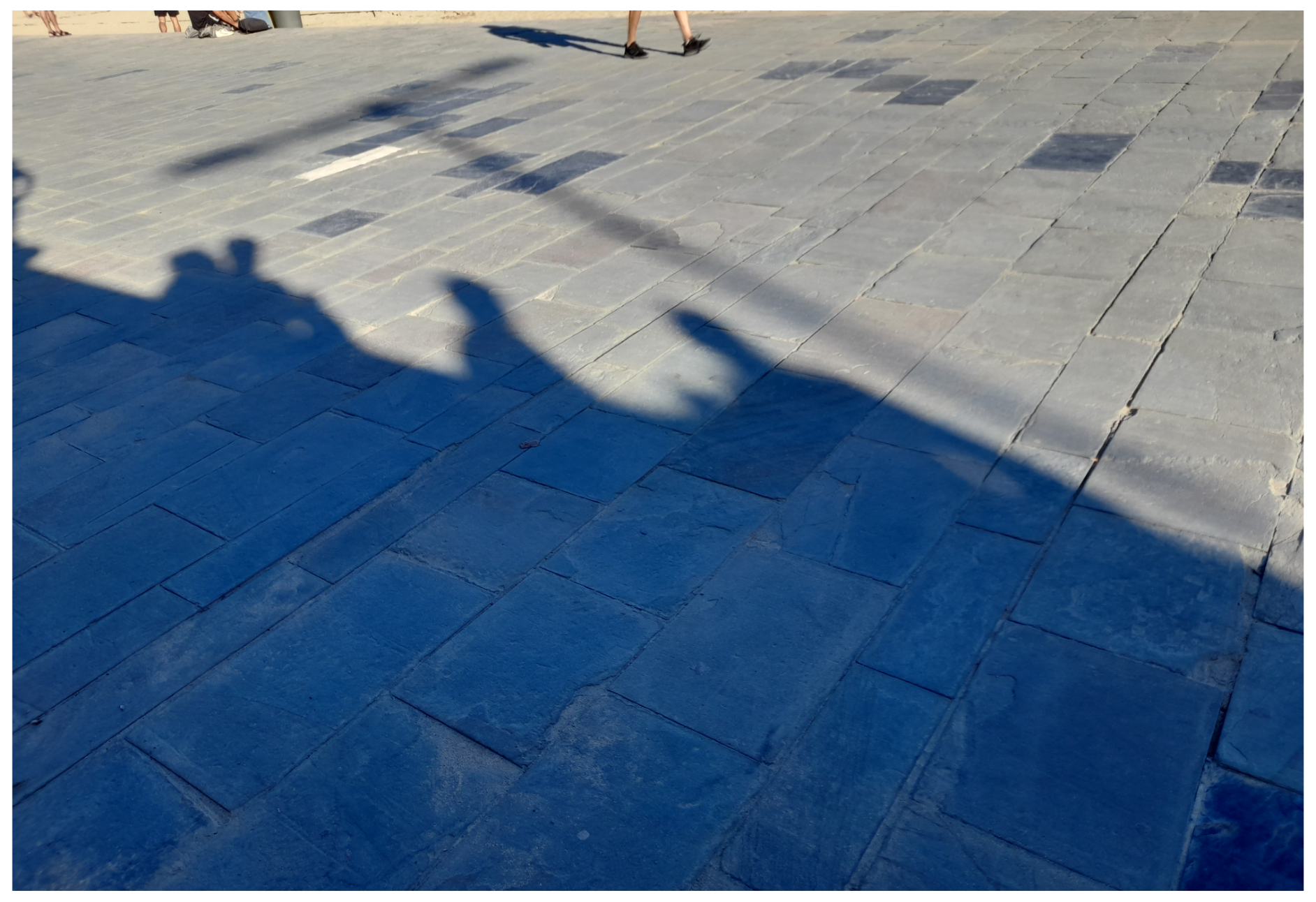
Thus considered, shades cease being a mere natural effect and acquire relational cultural properties because there is no shadow equal to another, and its uniqueness depends on how we observe, practice, and interrogate it in its site-specificity. This sensitivity seems important to me because it would allow repopulating shades and shadows: not, to say it again, as the negative presentation of what can be seen or as empty places [22], but as sites that enable many living beings to thrive: hiding from the blinding light of both the Sun and the Enlightenment as a project.
This version of shades as protecting other life-forms deeply resonates with the antiracist work of radical Black Caribbean thinker Édouard Glissant, who coined ‘a right to opacity’ as a condition of survival for all forms of difference in the long tail of slavery [23]. But also, in a more clearly environmental sense, with the proposals of architectural historian and disability activist David Gissen [24]. Gissen defends the need to rethink cities from many forms of bodily vulnerability, commonly removed from the centrality of urbanism: Black communities, older people and children, people with chronic illnesses and disabilities. Particularly because of how the Sun and heat endanger them: like the older people suffering in silence the ‘fatal isolation’ of heat waves or the uncountable Black bodies of outdoors workers exposed to brutal conditions of heat and insolation [25]. This would dispute the Sun’s centrality in public space design, making shade into a careful urban design principle.

Considering the social and material shade arrangements from the practices of diverse bodies in need of urban supports, allows us to think of shades not only as a ‘civic resource’, but also as an ‘inequality index.’ Shade is, indeed, subject to different conditions of unequal access, both in troublesome everyday negotiations of spatial production and in the legal regulations of who is allowed to produce or live in the shadows and how in different contexts. Shade, thus, appears a key infrastructure for urban habitability. And that is the main reason why journalist Sam Bloch suggests shades should be turned into a mandate for urban designers, or even more radically by urban theorist Mike Davies, into a collective urban right [26].
But how to study shades ethnographically? Faced with this challenge, therefore, we actively need to relearn how to describe and dimension the problems we face – also the problems of solutions –in order to be able to test many proposals to make the plural habitability of our urban environments possible. We need, therefore, to cultivate urban speculation, not real estate! I am referring to our ability to think and rethink the many possible ways that the urban could have to make it habitable again. This would require both (i) the invention of devices to carry out field research, giving a new meaning to the term ‘shadowing’, and (ii) taking inventory of everyday spatial practices, focusing on the relationship that different people have with our perpetual companions as inhabitants under the Sun [27].

Hence, experimenting and speculating on how to articulate a Department of Umbrology: a confederation of singular forms of thinking and intervention, a self-constituted entity from where we could liberate, imagine, and cultivate new urban sensibilities and responsibilities on how to make more livable cities. We need such a space to take responsibility for describing, protecting, and bringing to dimmed light many underground forms of knowledge and forms of collective intelligence that need opaque supports to flourish. That is, to discuss the multiple needs of a large number of unique actors often displaced by solar urbanization. I do not only mean those who cannot pay the air conditioning bill or those who need support to transform their homes and workspaces into more energy-efficient and comfortable. I also mean those who, like homeless people, appear as second-class humans, in addition to many non-human urbanites, like dogs or birds, we rarely think of when imagining climate policies.
For this proposal to work, we need very different professional and collective knowledges –– not just academic or institutional –– to work together. This mutual exchange and cross-contamination would allow exploring and trying out devices for urban inquiry, drawing on the plural sensibilities and knowledges to imagine how to equip these strange professionals of umbrology: between the natural and the cultural, with a particular interest in the analysis and politics of shades; devoting themselves to understanding the social and material complexity of shades, the multiplicity of actors and assemblages constituting them; the practices of generating shade, by and for whom, as well as the forms of sociality that they allow as regions or territories [28]: attending to their temporalities, their rhythms, and their spatial dramaturgies.
If we are successful in setting up such an experiment in the ways we encounter and describe shady urban worlds, we might make another city appear, one usually overlooked: the city of shades!
Online references
[1] As shown by two recent reports from the European Environment Agency: EEA Report No 07/2022: Climate change as a threat to health and well-being in Europe: focus on heat and infectious diseases, https://www.eea.europa.eu/publications/climate -change-impacts-on-health ; EEA Report No 22/2018: Unequal exposure and unequal impacts: social vulnerability to air pollution, noise and extreme temperatures in Europe, https://www.eea.europa.eu/publications/unequal-exposure-and-unequal-impacts
[2] A good example of this is the centrality that the issue of heat and the citizen response has in the recent 2022 IPCC report, particularly its chapter 6 “Cities, settlements and key infrastructure”, https://www.ipcc.ch/report/ar6/wg2/; or the initiatives of the Arsht -Rock Foundation to prepare for the risks of urban heat, around urban “heat officers”: https://onebillionresilient.org/project/chief-heat-officers/ or the categorization and naming of heat waves: https://onebillionresilient.org/project /categorizing-and-naming-heat-waves/
[3] My argument draws on and is deeply inspired by the work of the late French philosopher and anthropologist Bruno Latour and many of his collaborators. In his work of the last decade, there is a central notion: “New Climatic Regime,” which refers to the problems as a way of life, production, and its dependence on fossil energies that a particular has thrown us into. A destructive regime that has transformed our environments, shaped our knowledges and political institutions for more than a century, putting the habitability of the planet at risk. At the same time, this characterization suggests the possibility of its transformation from an old regime (ancien régime) to a new one: this requires searching for other horizons of meaning to engender plural forms of habitability. For an introduction to these ideas, see Latour, B. (2017). Facing Gaia: Eight Lectures on the New Climatic Regime. Polity.
[4] For an attentive look at the elemental plurality of human and non-human practices, or the scalar paradoxes of the multiple spatial, corporal, temporal, historical-cultural configurations of our omnipresent relationship with the sun and the dissipation of its rays or what we could call “solarities” –– from the infrastructural forms linked to the photovoltaic energy transition to anthropogenic catastrophes induced by the carbonification of the atmosphere (where the sun appears as “the source of withering and desiccation, a maker of monstrous heat”, p.18), not to forget the planetary centrality of photosynthesis or diurnal cycles, or its effects in the production of fossil energy or our very visual perception systems –– see Howe, C., Diamanti, J., & Moore, A. (Eds.). (2023). Solarities: Elemental Encounters and Refractions. punctum books.
[5] The most detailed attempt to restore the philosophical centrality of shadows that I am aware of is that of Casati, R. (2003). Shadows. Unlocking their secrets from Plato to our time. Vintage Books.
[6] Martin, A.J. (2017). The Evolution Underground: Burrows, Bunkers, and the Marvelous Subterranean World Beneath our Feet. Pegasus Books.
[7] Coccia, E. (2021). El jardín del mundo (The garden of the world), CENDEAC: https://www.youtube.com/watch?v=mxTQjBwuZRA&t=60s.
[8] Albert, B., Halle, F., & Mancuso, S. (2019). Trees. Thames & Hudson; Coccia, E. (2018). The Life of Plants: A Metaphysics of Mixture. Wiley; Coccia, E. (2021). Metamorphoses. Wiley; Leonardi, C., & Stagi, F. (2019). The Architecture of Trees. Princeton Architectural Press; Mattern, S. (2021). Tree Thinking. Places Journal, https://doi.org/10.22269/210921
[9] Such as the ones developed by an architectural contest and experimental prototyping process put together by Barcelona’s City Council that I have been accompanying since the summer of 2023: https://bithabitat.barcelona/es/proyectos/sombra/
[10] Kite, S. (2017: 5). Shadow-makers: A cultural history of shadows in architecture. Bloomsbury Academic.
[11] Ludovico, M., Attilio, P. & Ettore, V. (Eds.) (2009). The Mediterranean Medina. Gangemi Editor.
[12] Turner, C. (Ed.) (2024). Tropical Modernism: Architecture and Independence. V&A Publishing.
[13] Kallipoliti, L. (2024). Histories of Ecological Design: An Unfinished Cyclopedia. Act.
[14] Latour, B., & Weibel, P. (Eds.). (2020). Critical Zones: The Science and Politics of Landing on Earth. ZKM/MIT Press.
[15] Latour, B. (2018). Down to Earth: Politics in the New Climatic Regime . Polity; Latour, B. (2021). After Lockdown: A Metamorphosis. Polity.
[16] Horvath, T. (2009). The Discipline of Shadows. Conjunctions , 53 , 293-311.
[17] Bauch, N., & Scott, E.E. (2012). The Los Angeles Urban Rangers: Actualizing Geographic Thought. Cultural Geographies , 19 (3), 401-409; Kanouse, S. (2015). Critical Day Trips: Tourism and Land-Based Practice. In E.E. Scott & K. Swenson (2015). Critical landscapes: Art, space, politics (pp. 43-56). University of California Press.
[18] Crisis Cabinet of Political Fictions: https://www.gabinededecrisis.es/
[19] Hepach, M.G. & Lüder, C. (2023). Sensing Weather and Climate: Phenomenological and Ethnographic Approaches. Environment and Planning F 2 (3): 350–68.
[20] Aït-Touati, F., Arènes, A., & Grégoire, A. (2022). Terra Forma: A Book of Speculative Maps. MIT Press.
[21] Calvillo, N. (2023). Aeropolis: Queering Air in Toxicpolluted Worlds. Columbia Books on Architecture and the City; Fressoz, J.-B., & Locher, F. (2024). Chaos in the Heavens: The Forgotten History of Climate Change. Verse Books; Hsu, H. L. (2024). Air Conditioning. Bloomsbury; Parikka, J., & Dragona, D. (Eds.). (2022). Words of Weather: A glossary. Onassis Foundation; Starosielski, N. (2021). Media Hot & Cold. Duke University Press.
[22] In the same way that deserts are not empty either, a colonial representation commonly associated with the justification of the savage exploitation of arid lands: Henni, S. (Ed.) (2022). Deserts Are Not Empty. Columbia Books on Architecture and the City
[23] Glissant, E. (1997). For Opacity. In Poetics of Relation (pp.189-194). University of Michigan Press.
[24] Gissen, D. (2022). Disabling Environments. In The Architecture of Disability: Buildings, Cities, and Landscapes Beyond Access (pp. 95-114). Minnesota University Press.
[25] Keller, R. C. (2015). Fatal Isolation: The Devastating Paris Heat Wave of 2003. University of Chicago Press; Macktoom, S., Anwar, N.H., & Cross, J. (2023). Hot climates in urban South Asia: Negotiating the right to and the politics of shade at the everyday scale in Karachi. Urban Studies, https://doi.org/10.1177/00420980231195204
[26] Bloch, S. (2019). Shade: An Urban Design Mandate. Places Journal, https://doi.org/10.22269/190423 ; Davis, M. (1997) The radical politics of shade. Capitalism, Nature, Socialism 8(3): 35–39; Macktoom, S., Anwar, N.H., & Cross, J. (2023). Hot climates in urban South Asia: Negotiating the right to and the politics of shade at the everyday scale in Karachi. Urban Studies, https://doi.org/10.1177/00420980231195204
[27] For an interesting example, see Boserman, C. (2023). Solar Drawings: On anthotypies and environmental affectivity. Re-visiones,13. http://www.re-visiones.net/index.php/RE-VISIONES/article/view/529
[28] In the rich ethological sense explored by Despret, V. (2021). Living as a Bird. Wiley. A proposal that breaks with the idea of territory as something that can be explained away either in functional and economic terms or as property, ownership and exploitable resources, claiming instead the need to describe it from multiple practices of inhabiting that constitute it and the arts of coexistence that they make possible. This idea is further developed by Latour, B. (2021). After Lockdown: A Metamorphosis. Polity. Latour’s proposal is to undertake a cartographic practice of territories different from the ideas of ‘blood and soil’ that have underpinned European traditionalisms and nationalisms. This is crucial, in his words, to orient oneself in the New Climatic Regime, which requires understanding ‘where we live’ and ‘what we live off’ by listing our affiliations.

